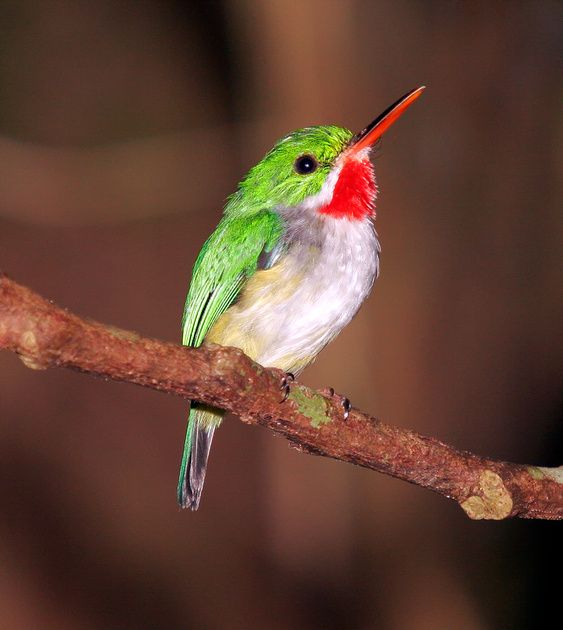- cross-posted to:
- earth@hexbear.net
- cross-posted to:
- earth@hexbear.net
The Magnificent Frigatebird (Fregata magnificens) is a seabird of the frigatebird family Fregatidae. With a length of 89–114 centimetres (2 ft 11 in – 3 ft 9 in) and wingspan of 2.17–2.44 m (7 ft 1 in – 8 ft 0 in) it is the largest species of frigatebird. The magnificent frigatebird has a long gray bill with a hooked tip. It has a deeply forked, scissor-like tail and sharply pointed wings. In the breeding season, male magnificent frigatebirds have a bright red throat pouch that they puff out to attract a mate. Females have white throats and bellies. Magnificent Frigatebirds range along coasts and islands in tropical and subtropical waters. They nest and roost in mangrove cays on coral reefs and in low trees and shrubs on islands. Magnificent Frigatebirds forage over warm oceans far out to sea, along the coast, and in shallow lagoons. Magnificent Frigatebirds range along coasts and islands in tropical and subtropical waters. They nest and roost in mangrove cays on coral reefs and in low trees and shrubs on islands. Magnificent Frigatebirds forage over warm oceans far out to sea, along the coast, and in shallow lagoons. Magnificent Frigatebirds eat primarily flying fish, tuna, herring, and squid, which they grab from the surface of the water without getting wet. They also eat plankton, crabs, jellyfish, and other items on the surface of the water including discarded fish from fishing boats. Magnificent Frigatebirds are usually silent at sea, but sometimes give a grating call when coming in for a landing or while fighting with each other above the colony. Males make guttural drumming sounds during courtship. Juveniles beg for food with harsh screams. During breeding and courtship males and females make clicking noises with their bills. Males also use their bill to tap on the inflated gular sac, making drumming sounds. Here is a link to listen to this bird if you are so inclined.
Wow that is magnificent 🫨
I never lie folk, never lie.
Lmao my dog went alert mode when i played the sounds.
Pets are always so silly 🤭🤭🤭



